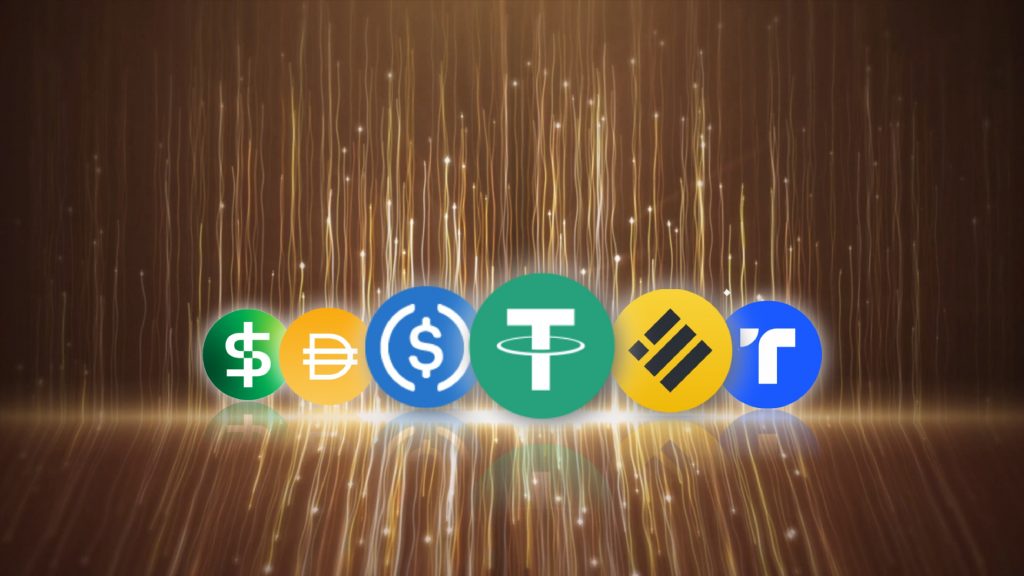Cryptocurrency is a constantly evolving organism. Since Bitcoin’s conception in 2009, the market has grown from strength to strength. Albeit with a bit of shakiness along the way – with an ecosystem of altcoins, dApps, and NFTs transforming the market into a certified digital universe. One of the most popular developments in recent years is stablecoins.

It is an aspect of cryptocurrency pegged to a traditional financial asset. Invented to be a viable alternative to the high crypto volatility. Stablecoins have given several new investors a door to cryptocurrency without concern about losing their investments if they make the wrong decision.
For many users, stablecoins have been a crucial differential that has helped cryptocurrency to thrive, even when volatility has threatened to bring it down. But are they so integral, or are they just another alternative in the blockchain ecosystem?
What Are Stablecoins?
To answer the question of stablecoins’ impact on the crypto market, it is first necessary to know what stablecoins represent. Stablecoins are one of the many altcoins on the market. But unlike other altcoins, they connect to a traditional reserve – such as the US dollar or gold. They reduce volatility and be better suited to day-to-day commerce.
The most popular stablecoin now is Tether, which depends on the US dollar. It is popular for its security and efficiency within crypto-to-fiat platforms. Also, USD Coin connects to the US dollar, and True USD is one of the most liquid stablecoins on the market.
As of September 2022, the market amounted to more than $150 billion, but it is not only fiat-backed stablecoins providing an impact. Other stablecoins include commodity-backed stablecoins stabilized with hard assets such as gold and real estate and crypto-backed stablecoins, which maintain an overcollateralized position amongst the higher volatility of another digital token.
Why Are They Utilized Compared To Other Crypto Coins?
There are many reasons why stablecoins are preferable over other crypto coins. For starters, newcomers to the crypto market might be wary of the increasing volatility that is inherent. A stablecoin allows buyers and sellers to be confident that the value of their investment will not rise or crash along with the rest of the crypto market.
You can easily transfer a stablecoin. As an investor, you will not need a bank account to hold stablecoins. You can send them to places where the US dollar might be hard to obtain. Transfers are also cheap, with some investors having sent millions worth of USDC with fees of less than one dollar.
According to experts, stablecoins also hold a crucial role in the growing ecosystem of cryptocurrency itself, making them a viable alternative for users and a necessary cog inside the metaverse machine.
Why Are Stablecoins Important For Crypto?
The reason stablecoins can be as crucial to the market is that they function as a bridge between fiat currency and crypto assets. In 2021, the trading volume of stablecoins managed to surpass unbaked crypto tokens, with an average of $2.9 trillion in trading volumes every quarter – nearly meeting the average US equities on the New York Stock Exchange.
As well as this, coins like Tether were in half of all Bitcoin and Ethereum trades throughout 2021. And this grew to around 65% of all trading in March 2022. It demonstrates their efficiency in battling interoperability. With each network within the blockchain having a different token, it is difficult for users to engage with another economy without being met with transferability issues. Stablecoins alleviate this issue by acting as a bridge. Users across the metaverse can easily interact and trade with a variety of alternative blockchain networks, keeping efficiency and productivity high and exorbitant fees low.

Stablecoins also provide most of the liquidity in crypto trading and DeFi applications. They amounted to around 45% of liquidity in decentralized exchanges in May of this year, with half of this percentage provided by collateralized stablecoins. In terms of the exchanges, liquidity is significant, as many users are holding onto their coin in the hope that the value of their portfolio will rise and become the next leading player. Stablecoins alleviate this issue as they focus more on trading than holding as an investment. As a result, it similarly allows more investors to buy metaverse assets and expands the market.
The Growth Of Stablecoins And The Metaverse
For this reason, stablecoins are far more than just another coin. They are an integral part of the metaverse ecosystem which offers efficiency, security, and stability. They also represent the growth that cryptocurrency is continuing to achieve. Because they are more secure and stable, they are a more attractive investment for users concerned about losing out. With more users getting on board and achieving stability with stablecoins, the more the market can expand. So cryptocurrency becomes a more viable option for investors hesitating to participate.
Is stablecoin decentralized?
That is not to say they are perfect. While blockchain technology is predominantly based on a decentralized network, stablecoins are naturally more centralized, as they are backed by traditional assets and would need a centralized team to manage the reserve and keep it leaning towards the structure of this asset. There is also the question of the Terra debacle earlier in 2022, where Terra managed to fall below its peak and cause mayhem and disorientation across the crypto market. That has caused talks of regulation to get louder. And investors worldwide seriously consider the mechanism of their chosen stablecoin.
As a rule, however, stablecoins are a heavily beneficial part of the cryptocurrency ecosystem. There will naturally – and quite rightly – be questions about their proficiency and reliability, but so far, stablecoins have proved to be an incredible alternative to volatility and complicated trading structures, helping to bolster the ease of the metaverse and aid it in its growth.





